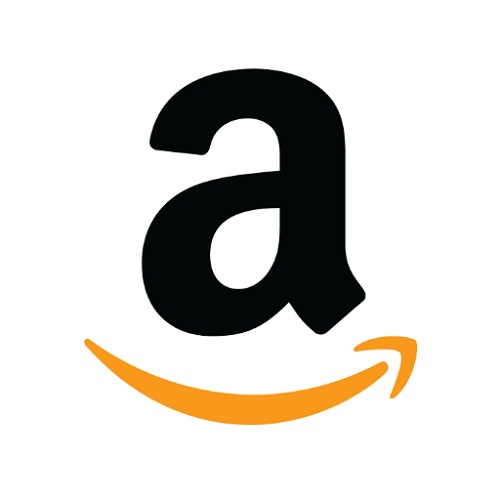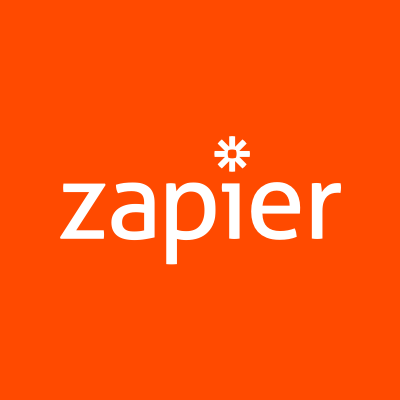How I Started A $500K/Month Video Production Company From My Bedroom in LA
Hello! Who are you and what business did you start?🔗
Hello there! My name is Hope Horner, and I’m the co-founder and CEO of Lemonlight, an on-demand video production company that offers brands and agencies access to high-quality affordable video content nationwide.
At Lemonlight, we focus on digital video content, which includes branded website videos, social media video ads, how-to videos, product videos, crowdfunding videos, and more.
We work with brands of all sizes and across all major industries - truly. We’ve produced more than 7000 videos for more than 3000 brands, and some of our notable clients include Amazon, TripAdvisor, Hyatt, Pizza Hut, Sotheby’s, and more.
We’ve built Lemonlight as an entirely self-funded business. We haven’t taken any outside capital since we launched the business in 2014. We’re on track to hit 6M in sales this year and we’ve grown the team to 45 full-time employees. We’ve been recognized in dozens of major publications, and we were awarded in Inc 5000 and Entrepreneur 360 for three years in a row.

What's your backstory and how did you come up with the idea?🔗
I grew up in Johnson City, TN - a small town in the northeast corner of the state. For as long as I can remember, I dreamed of moving to Los Angeles and starting my own business. When I was 18, I moved to LA to attend college and haven’t left yet.
I started my first business in 2008 when the startup culture was very limited in Los Angeles. Resources were scarce and it was difficult to learn how to start and run a company with no experience. Nonetheless, I trudged through the journey for a few years trying to figure it out. It was filled with some success and a lot of learning lessons, but ultimately, it didn’t end the way I had hoped. I spent a few more years working with startup companies and learning more about the landscape and how to hone my skills as a leader and entrepreneur.
In April of 2014, I started my second company, Lemonlight, out of a second bedroom with my two co-founders, Daniel Marlow, and Chad Rogers. Lemonlight’s mission was to offer small and medium-sized businesses access to high-quality, affordable video content that they could use to advertise their brand online.

At the time, the average cost for a 30-second commercial was $342,000 according to the American Association of Advertising Agencies. It was filled with lengthy creative meetings and customized prices based on the size of the brand. We saw an opportunity to bring transparency to an industry that had long operated in a very opaque world limited to the business elite.
We wanted to validate the market so we built a $12 website on Squarespace, signed up for a free Mailchimp account, and hacked together a rough sales presentation.
We credit that early success to our unique approach of commoditizing video production. We offered a pre-built pricing menu that was affordable to most business owners. After the videos were made, we taught them how to use them as online ads to grow their own business.
Take us through the process of designing, prototyping, and manufacturing your first product.🔗
When we started the business, we were committed to transforming the way video content was purchased and produced.
Traditional video production teaches you to design the concept, outline the details, and then determine the price based on those details. That’s bananas! You can spend weeks on the concepting phase and never end up selling anything.
We reversed the process and added a layer of transparency that had never been seen before in the industry. We created a set pricing menu and defined what was included upfront. This allowed us to sell the package long before we ever made any creative decisions about what the video would showcase. We sold two products back then - a website brand video and a preroll commercial; you could buy them individually or get a discount if you bought both.
Over time, we’ve increased our product offering considerably but the core model is still in place, which includes prebuilt packages and transparent pricing.
In the early days, we spent all of our time on sales, marketing, and delivering our clients a great product. We did not spend enough time on some of the legalities and nuances that are needed when you start a business. We learned some tough - and expensive - lessons early on as we fumbled through the processes of incorporating, payroll taxes, and accounting. After about a year and a half, we finally hired a great attorney and a great accountant, who helped us get everything back on track.
Describe the process of launching the business.🔗
When we started Lemonlight, we weren’t completely sure this was the business we wanted to start so before we spend any real money on the brand, we wanted to validate the market. We built a $12 website on Squarespace, signed up for a free MailChimp account, and hacked together a rough sales presentation. We started reaching out to local businesses to see if they would be interested in taking a meeting with us to learn about how video content could enhance their brand. To our pleasant surprise, they were more interested than we could have imagined. We sold $30,000 worth of videos our first month in business and we quickly had to figure out how to produce their content from scratch… from our apartment.
We had to quickly split up the responsibilities between the three of us to try and make it work.
- I was responsible for marketing, customer management, and administrative tasks.
- Chad was responsible for sales. He would drive around and meet with potential customers.
- Daniel would produce the videos - that meant everything from writing the script, shooting the video, editing the video, and more.
We focused on steady growth. We hired our first employee in month three and by the end of 2014, we had seven full-time team members. While we were generating consistent money, we almost immediately started adding on expenses.
embed:vimeo Video we made on our one-year anniversary.
By the end of our first full year in business, we had generated over a million dollars, but we were struggling desperately to make ends meet. Payroll constantly loomed over us as we cobbled together just enough every pay period. Finally, we had to get focused on figuring out the problem.
When we started the business, we were committed to offering video production solutions at incredibly low prices. Unfortunately, those prices weren’t sustainable for us while also trying to provide a high-quality product. We ended up raising our prices and learned some important lessons about pricing models and how to juggle quality and affordability.
Since launch, what has worked to attract and retain customers?🔗
We employ a lot of sales and marketing efforts to attract and retain new business, but there’s no magic formula. Here are a few of the marketing pillars that we’ve tried:
Email Marketing: This drives the majority of leads and sales for us. We split up our email marketing into a few major pillars: prospecting, engagement funnels, promotions, and newsletters. We’re very consistent and keep weekly KPIs to monitor the level of engagement at any given time.
Focus on sales and marketing early. The sooner you start generating sales, the sooner you get customer feedback and use it to shape what you’re building.
Content / SEO: We’ve invested a lot of time and resources into building out our content strategy and today, it’s our second-largest driver of leads. We publish four articles per week on our blog and produce one pillar page per quarter. From there, it’s all about repurposing the content.
- Convert our most popular pieces into infographics, videos, guides, and more
- Monthly webinar with a partner so both companies can drive new leads
- Write for notable publications with the help of Influence and Co
- Regularly reach out to other industry blogs to guest write and partner on content opportunities

Paid Advertising: We’ve seen some success here but haven’t solidified a fully scalable solution. As a B2B company, it seems a little more challenging to convert on Facebook and other social platforms. We have had some success by advertising on directory sites like Upcity and Clutch.
Social Media: We’ve tried our hand at social media a few times but haven’t seen the ROI we needed. Today, we post a few times a week for continuity but don’t spend much time or effort here.
Rebuys: Approximately 50% of our sales every month come from previous customers. We track our NPS score and try and ensure an exceptional customer experience throughout every project.
How are you doing today and what does the future look like?🔗
Today, the future looks bright. We’ve currently generating around $500K per month and gross margins are around 65%. The team has grown to 45 people and we recently purchased a 6,000 square foot office building in Los Angeles that includes an in-house production studio. Our LTV to CAC ratio is around 3:1 and we’re actively trying to increase that to 4:1 currently. We have about 30K visitors per month on our website.
We are profitable, although net margins are considerably less than we’d like. When capital is limited, you have to decide what you want to focus on: growth or profits. If you’re focused on growth, you have to constantly invest in that growth and that costs money, which decreases your net margin. This has been a delicate balance since we started the business.
In 2020, we’re focused on two major goals:
- Transforming our business from a service company to a tech company.
- Positioning ourselves as true experts in the digital video landscape.
Currently, we’re building out some proprietary technology that will automate the production process for customers. They can visit the site, buy the video package they want, and complete many of the pre-productions steps with ease. The system will then automatically book the crew for the productions without any manual emails or phone calls. This will allow our customers to have more control over the video production process and will allow us to provide more transparency along the way.
The technology we’re building eliminates many of the mundane steps that our team has to endure on a daily basis as we operate as a service-based company. Once the platform is in place, our team will have more time to focus on the overall strategy of our customers’ video marketing plans. If a customer wants to make a video for their business, we want to guarantee, not only quality but also optimization strategies and techniques to ensure that the video will accomplish the goals they’ve set.

Through starting the business, have you learned anything particularly helpful or advantageous?🔗
The most important advice I can share is to surround yourself with other entrepreneurs - some that have more experience and some that have less experience than you. The entrepreneurship road is paved with challenges and, at times, seemingly insurmountable roadblocks. It’s important to have people to talk to that understand what you’re going through. You can confide in them when making big decisions or ring them up when you’re simply trying to gain an outside perspective on a simple problem. They can offer advice and solutions that can take years to learn on your own. Plus, there’s also inherent relief when you know that other people have shared the same experience.
Similarly, it’s important to be a sounding board for other entrepreneurs that need advice. Sometimes, talking through something that you already know can spark ideas and lead to great conversations.
Lastly, nobody has a secret formula for success. It’s all about working hard and being consistent in your approach.
One of the easiest ways to find these people is through clubs or organizations like Young Entrepreneurs Club (YEC) or Entrepreneurs Organization (EO). These types of clubs can be pricey so depending on where you are in your journey, find the right organization for you. You can also search for groups on Facebook and LinkedIn, or volunteer as a judge at events like Startup Weekend to meet fellow entrepreneurs.
What platform/tools do you use for your business?🔗
We spend around $10,000 per month on software subscriptions, so we rely on a wide range of products. However, I can confidently say that the following three software are the most critical to running our business.
Hubspot: Although Hubspot is the most expensive, it is an incredibly powerful tool that helps us run our entire sales and marketing teams. It consolidates all of our sales and marketing efforts - SEO, social media, emails, paid ads, prospecting, deals, etc - into one place and provides instant access to an abundance of data. It’s more intuitive than Salesforce and their customer service is top-notch.
Monday.com: Monday is an incredible software that helps plan, organize, and track everything in our organization. We use it for team management and client management alike.
Gusto: While Gusto may not be mission-critical, it’s definitely one of my favorites. We’ve used it to run payroll for years, but they recently unrolled some other great features like team feedback, benefit solutions, and more.
What have been the most influential books, podcasts, or other resources?🔗
Delivering Happiness - Tony Hsieh
This book opens up with Tony’s story, which is incredibly inspiring. He walks through the real challenges he faced with Zappos and the lengths he went to save the company in the early days. The remainder of the book talks about his obsession with customers and tangible suggestions on improving customer retention and company culture.
Dare to Lead - Brene Brown
I am a huge Brene Brown fan. She focuses on human part of running a business and teaches you how to handle tough conversations. She explores what it means (and doesn’t mean) to be transparent and demonstrates how to lead a company that people want to be a part of.
The Hard Thing About Hard Things - Ben Horowitz
Any entrepreneur will tell you that building a business is hard. In this book, Ben Horowitz walks through a variety of different types of challenges that you face and provides tangible advice on how to handle them. It’s real, it’s raw, and it’s great.
Advice for other entrepreneurs who want to get started or are just starting out?🔗
When you’re first getting started, it’s hard to know where to start, but today, there are tons of resources for budding entrepreneurs. Read blogs like Both Sides of the Table and check out resources like Startups.com. If you live in an area that offers startup accelerators or incubators, apply! All of these resources can provide a blueprint for getting started.
Also, focus on sales and marketing early. The sooner you start generating sales, the sooner you get customer feedback. You can use this feedback to shape what you’re building and how you’re spending your money.
Lastly, nobody has a secret formula for success. I spent years thinking “if I could just talk to this person, or get advice from that person, they’d know what I need to do.” Eventually, I would speak to them and most of the time their advice boils down to the same fundamentals as everyone else. It’s all about working hard and being consistent in your approach.
Are you looking to hire for certain positions right now?🔗
We’re always looking for great people. At the moment, we’re actively hiring full-time, full-stack engineers to help build out our technology product.
Where can we go to learn more?🔗
Also, check out our comprehensive guide to develop your own video marketing strategy.

Download the report and join our email newsletter packed with business ideas and money-making opportunities, backed by real-life case studies.

Download the report and join our email newsletter packed with business ideas and money-making opportunities, backed by real-life case studies.

Download the report and join our email newsletter packed with business ideas and money-making opportunities, backed by real-life case studies.

Download the report and join our email newsletter packed with business ideas and money-making opportunities, backed by real-life case studies.

Download the report and join our email newsletter packed with business ideas and money-making opportunities, backed by real-life case studies.

Download the report and join our email newsletter packed with business ideas and money-making opportunities, backed by real-life case studies.

Download the report and join our email newsletter packed with business ideas and money-making opportunities, backed by real-life case studies.

Download the report and join our email newsletter packed with business ideas and money-making opportunities, backed by real-life case studies.
































